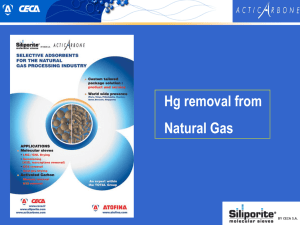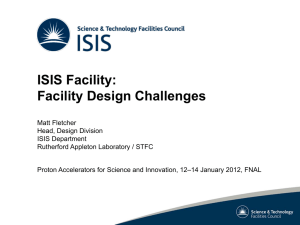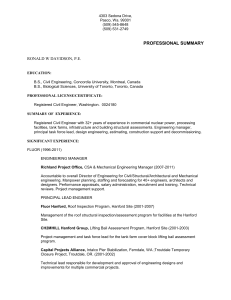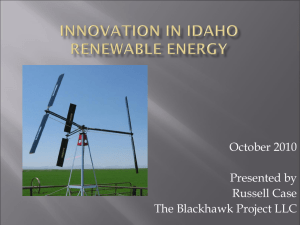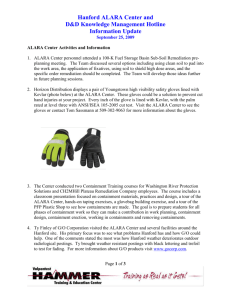Resume - Expert Witness Network
advertisement
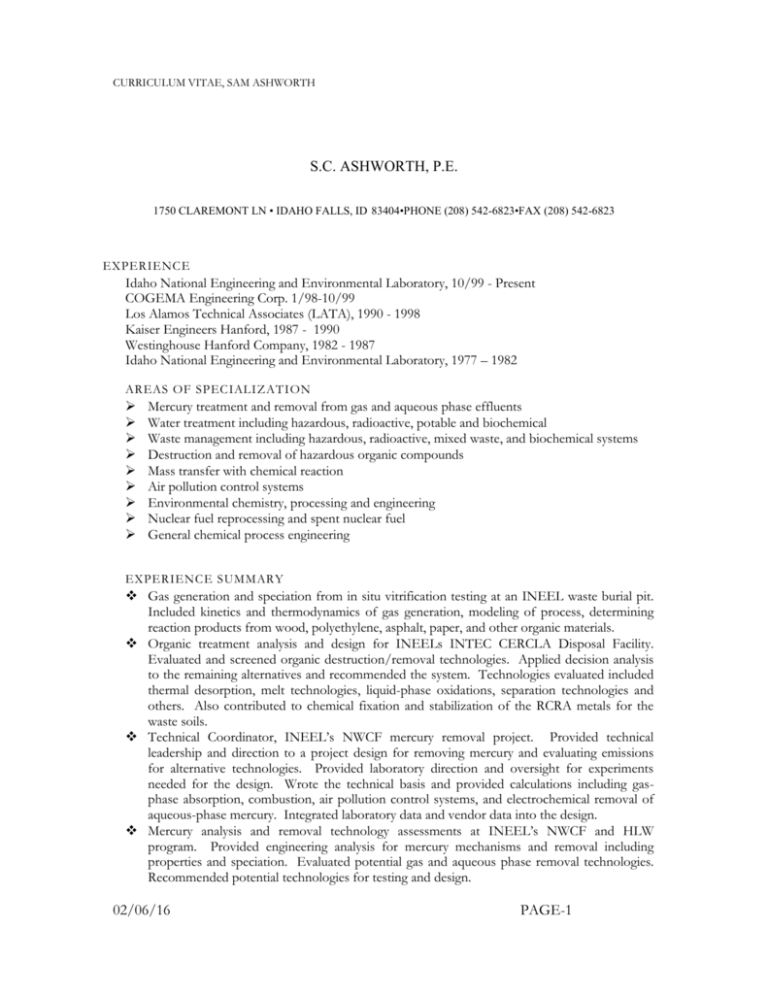
CURRICULUM VITAE, SAM ASHWORTH S.C. ASHWORTH, P.E. 1750 CLAREMONT LN • IDAHO FALLS, ID 83404•PHONE (208) 542-6823•FAX (208) 542-6823 EXPERIENCE Idaho National Engineering and Environmental Laboratory, 10/99 - Present COGEMA Engineering Corp. 1/98-10/99 Los Alamos Technical Associates (LATA), 1990 - 1998 Kaiser Engineers Hanford, 1987 - 1990 Westinghouse Hanford Company, 1982 - 1987 Idaho National Engineering and Environmental Laboratory, 1977 – 1982 AREAS OF SPECIALIZATION Mercury treatment and removal from gas and aqueous phase effluents Water treatment including hazardous, radioactive, potable and biochemical Waste management including hazardous, radioactive, mixed waste, and biochemical systems Destruction and removal of hazardous organic compounds Mass transfer with chemical reaction Air pollution control systems Environmental chemistry, processing and engineering Nuclear fuel reprocessing and spent nuclear fuel General chemical process engineering EXPERIENCE SUMMARY Gas generation and speciation from in situ vitrification testing at an INEEL waste burial pit. Included kinetics and thermodynamics of gas generation, modeling of process, determining reaction products from wood, polyethylene, asphalt, paper, and other organic materials. Organic treatment analysis and design for INEELs INTEC CERCLA Disposal Facility. Evaluated and screened organic destruction/removal technologies. Applied decision analysis to the remaining alternatives and recommended the system. Technologies evaluated included thermal desorption, melt technologies, liquid-phase oxidations, separation technologies and others. Also contributed to chemical fixation and stabilization of the RCRA metals for the waste soils. Technical Coordinator, INEEL’s NWCF mercury removal project. Provided technical leadership and direction to a project design for removing mercury and evaluating emissions for alternative technologies. Provided laboratory direction and oversight for experiments needed for the design. Wrote the technical basis and provided calculations including gasphase absorption, combustion, air pollution control systems, and electrochemical removal of aqueous-phase mercury. Integrated laboratory data and vendor data into the design. Mercury analysis and removal technology assessments at INEEL’s NWCF and HLW program. Provided engineering analysis for mercury mechanisms and removal including properties and speciation. Evaluated potential gas and aqueous phase removal technologies. Recommended potential technologies for testing and design. 02/06/16 1 PAGE-1 CURRICULUM VITAE, SAM ASHWORTH PCB technology study including EPA and new oxidation methods to remove PCB from contaminated uranium sludges. Examined several methods of removing PCBs including solvent extraction, APEG/KPEG, aqueous electron, high energy processes, and thermal methods. Fluid flow, solution thermodynamics, chemical reaction engineering, and mass transfer. Use of these in developing mathematical and predictive models for hydrogen generation and accumulation, water treatment, high energy reactions (UV), electrochemical reactors and air emissions. Key member of a team evaluating a proprietary mixed oxidant system (MIOX) for alternative uses including remediation of contaminated groundwater, hydrogen sulfide oxidation, sanitation in food and beverage processes, UV organic oxidation, and other uses. Reaction engineering design and analysis in advanced organic oxidations. Food Processing engineering at several apple processors in Eastern Washington. The objective was to eliminate several bacteria colonies including penicillium using an on-site chlorine generation unit. Installed the systems, set control functions, and conducted testing. Used similar technologies at a chicken processing plant in Arkansas. Used a new pH control method (CO2 injection and high mass transfer diffuser) to maximize the chlorine effectiveness. Environmental chemistry and water treatment. Evaluated and conducted preliminary design of alternatives to deep well injection at a site in Artesia New Mexico. Included nanofiltration/reverse osmosis, ion exchange, lime precipitation and solar ponds. Designed, built and tested a water treatment plant at Hanford’s N Reactor. Lead engineer and participant engineer for major systems built at Hanford including 200 Area Effluent Treatment system, 300 Area sewage treatment plant, 300 Area chemical activated sludge treatment plant, and the waste evaporator distillate treatment system. Key member of a team evaluating and implementing Russian technology for treating radiaoactive submarine waters at a base in Sverdolinsk. Chemical engineering advisor to vice president on the technologies for this joint Russian-LATA proposal. Cooling tower retrofit. Evaluated operation of a cooling tower and closed-loop water system. Made recommendations and retrofit the system such that water treatment could be done and anti-freeze added (the last minute upgrade prevented freeze damage to this several million dollar facility). Experience in uranium corrosion and spent nuclear fuel stabilization. Worked on the preliminary design of Hanford’s spent nuclear fuel stabilization project including prediction of radioactive and flammable gases, vacuum drying and water treatment design for the fuel storage basin. Key member of the high level team. Chemical fixation and stabilization (CFS). Worked on design of the high level waste CFS system including EPA liner testing, drainage calculations, liner calculations, and coatings/barrier analysis. Led a team of experts to determine the problems occurring with a feed tank mixing pump. Found the solution, wrote an operating manual and provided officials with a lessons learned document. Incineration study for a Hanford site. Evaluated incineration systems for dealing with radioactive mixed waste and recommended the preferred system. Worked on team with international and national experts. Numerous Hanford Tank Farm projects including systems engineering, tank vapor space composition estimation, and vapor sampling and analysis technology assessments. Worked with Dr. Carl Yaws, Lamar University, an international expert in solution properties of organic compounds in salt waters. Corrosion analysis and testing of various alloys and non-metallics and troubleshooting and design input to control corrosion. Operation and engineering support of INEEL’s fuel reprocessing plant and Hanford’s 02/06/16 2 PAGE-2 CURRICULUM VITAE, SAM ASHWORTH PUREX and Z-Plant. Major involvement for in-plant testing of the uranium denitrator. Redesign of Z-Plant’s plutonium evaporator. Determined plugging location and corrosion mechanism in a titanium evaporator. Engineering lead in removing plugged piping and using ultrasonics to validate corrosion mechanism. EDUCATION MS, Chemical Engineering, University of Washington, 1988. BS, Chemical Engineering, University of Utah, 1977. PROFESSIONAL MEMBERS HIPS Member, American Institute of Chemical Engineers 1995 Director of Nuclear Technology Division Professional Engineer Registration: Washinton and Idaho PAPERS AND PUBLICATI ONS Determination of Viable Processes for Removing Mercury from the Fluidized Bed Calciner (NWCF) Offgas System at the Idaho National Engineering and Environmental Laboratory (INEEL), Air Quality II, Washington DC, September 18-21, 2000. Mercury Removal at Idaho National Engineering Environmental Laboratory’s New Waste Calciner Facility, S. C. Ashworth, G. Hulet, Bechtel BWXT Idaho, LLC Waste Management 2000, Tucson, AZ, February 27, March 2, 2000 C. M. Barnes; D. D. Taylor; S. C. Ashworth; J. B. Bosley; D. R. Haefner, Technology Evaluations Related to Mercury, Technetium, and Chloride in Treatment of Wastes at the Idaho Nuclear Technology and Engineering Center of the Idaho National Engineering and Environmental Laboratory, INEEL/EXT-9900894, October 1999, http://www.osti.gov/bridge/product.biblio.jsp?osti_id=765747. Off-Gas Monitoring and Control, Melter Conference, Augusta GA, May 4-7, 1999 Ashworth, S.C., Design requirements document for project W-520, immobilized low-activity waste Disposal,ON:DE99050922;BR:EW3130010,August 1998, http://www.osti.gov/bridge/product.biblio.jsp?osti_id=362439 Photochemical Waste Treatment for Hazardous Chemicals, Invitational Lecture Graduate Environmental Engineering, Washington State University, March 24, 1998. Membrane Distillation, Purifying Water, Presentation at Washington State University Tri-Cities, November 1997 The Corrosion of Uranium-Implications in Stabilization, Presentation and Paper at the AIChE Summer Meeting, Nuclear Engineering Division, Boston, MA, August, 1995. Gas Generation Modeling Predictions for Spent Nuclear Fuel, Presentation to TAP Technical Team, Westinghouse Hanford, July 1995. 02/06/16 3 PAGE-3 CURRICULUM VITAE, SAM ASHWORTH Using Oxidizing Solutions to Passivate Irradiated Fuel at Hanfords K-East Basin, Presented to DOE, WHC, and PNL, Tri-City Professional Center, August 11, 1994. Problem/Root Cause Analysis and Lessons Learned for RMW Tank Mixer Pump Problems, Presentation to DOE and WHC at Hanford's 300 East, April 8, 1993. The Corrosion Testing of Hastalloy G-30 Alloy as an Upgrade Material for Pu Finishing Plant Evaporators and Application of Explosion Bonded Joints to Eliminate Tube to Tube Seal Welds, Bill Carlos and Sam Ashworth, Rockwell/Kaiser Hanford, Plutonium/ Uranium Recovery Operations Conference, Kennewick, Washington, October 1987. Analysis of RCRA Confinement Features Relating to Concrete Structures for Disposing RMW, Presentation at Tri-City Professional Center, April 1989. Design of a Thermosyphon Evaporator, MS Project Presentation, Tri-City University Center, Richland, Washington, 1988. 1977 Operation of the ICPP Pure Gas Recovery Facility, June 1982. An Experimental Investigation of Fluidized Bed Denitration at the ICPP, October 1981. 02/06/16 4 PAGE-4
